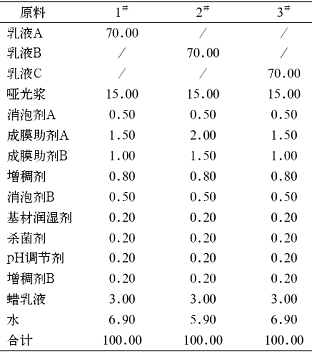Due to its good compressive strength and bending strength, as well as natural, non-reproducible and unique texture effects, wood has become the preferred material for high-end residential wooden doors and windows, both practically and aesthetically. Moreover, the wood window processing energy consumption is small, the insulation and heat insulation of the living room after installation, especially the sound insulation performance has a significant advantage over the window of other materials, and is easy to maintain and replace, and various solid wood doors and windows also represent the integration of human and nature. The trend of the times. Due to the special physical and mechanical properties, chemical composition characteristics of wood, and the location of the building structure where wooden doors and windows are located, wood coatings for wooden doors and windows are required to meet the requirements of decorative design, but also need to meet the requirements of waterproof, breathable, anti-corrosion, deformation prevention, UV resistance and mechanical resistance. Requirements for damage, ease of maintenance and refurbishment. Since these wood structures are more or less affected by factors such as sunlight, ultraviolet rays, temperature difference, rainwater, condensed water, etc., it is necessary to protect and paint materials that conform to the characteristics of the wood itself. If the technical problems of wood coating are not well solved, By standardizing the right coatings and construction processes, the entire wood window industry will be affected. Water-based coatings can minimize the emission of organic solvent VOCs in the atmosphere, and become a mainstream product type of industrial coatings under strict regulations in Europe, America and other countries. In the aspect of wood waterborne coatings, European waterborne wood coatings have also matured and become the main types of coatings for doors and windows. In China, waterborne wood coatings have gradually replaced solvent-based coatings that are not environmentally friendly, highly toxic, complicated in construction, and have potential safety hazards. It is favored by furniture factories and oil masters. 1 formula design ideas and principles 1.1 Resin selection Waterborne coatings are coatings based on water soluble resins or different types of dispersion resins. The basic composition of waterborne coatings is: different forms of waterborne resins, pigments and fillers and related additives. Water is used as a diluent in the application process [1]. Resin is an important film-forming material for waterborne wood coatings and is a key component of the overall coating formulation. It has been successfully applied to resins for one-component waterborne wood coatings. The main types are waterborne alkyds, acrylic emulsions, aqueous polyurethane dispersions and aqueous acrylic polyurethane dispersions. The water-based alkyd resin has good leveling property and high fullness, but the drying is slow, the hardness of the coating film is low, and the weather resistance is poor. The water-based wood coating prepared by the aqueous polyurethane dispersion has the characteristics of good low-temperature film forming property, good leveling property, high fullness, wear resistance, good hand feeling and good anti-backsticking property, but the price is relatively high. Acrylic emulsion has the characteristics of quick drying, light resistance, excellent weather resistance, etc., and the price is cheap, but the traditional acrylic emulsion is resistant to water, anti-sticking and poor flexibility. The aqueous acrylic polyurethane dispersion synthesized by the core-shell polymerization technology not only has the characteristics of acrylic acid and polyurethane resin, but also reduces the cost, and has good low-temperature film forming property and low VOC content [2]. Product performance requirements for clear water-based varnishes for window frames: low minimum film formation temperature (MFFT), good early blocking resistance and impact resistance, good external water and durability resistance, high shear and good storage stability and flow Denaturation [3]. Based on the above theory and considering the properties and prices of various resins, the test finally selected three imported acrylic polyurethane dispersions A, B and C with core-shell structure, which have similar solid content and minimum film formation. Temperature (MFFT), the data of which is shown in Table 1. Table 1 Basic data of the emulsion Table 1 Basic data of the emulsion The choice of resin in matt varnish directly affects the physicochemical properties of the final coating film. The above three resins are made into a matt varnish according to the formula in Table 2, and the performance of the three are compared. The results are shown in Table 3. Table 2 Waterborne matt varnish formula Table 2 Waterborne matt varnish formula Diverse product selection: PVC floor mat manufacturers in China usually offer a wide selection of products, including different designs, sizes and functions. This diversity allows buyers in Europe and the United States to choose appropriate products according to market needs and consumer preferences. Swimming pool mats,Non Slip Bath Mat,Non Slip Mat,Pool Mat,Under Pool Mat Jiangyin Yining E-Commerce Co., Ltd , https://www.pvcmatyining.com

High quality standards: With the continuous development of China's manufacturing industry, many manufacturers have strengthened the control of product quality. While meeting international standards, China's Pvc floor mats also provide certain customization and upgrade options to meet the demand for high-quality products in Europe and the United States.